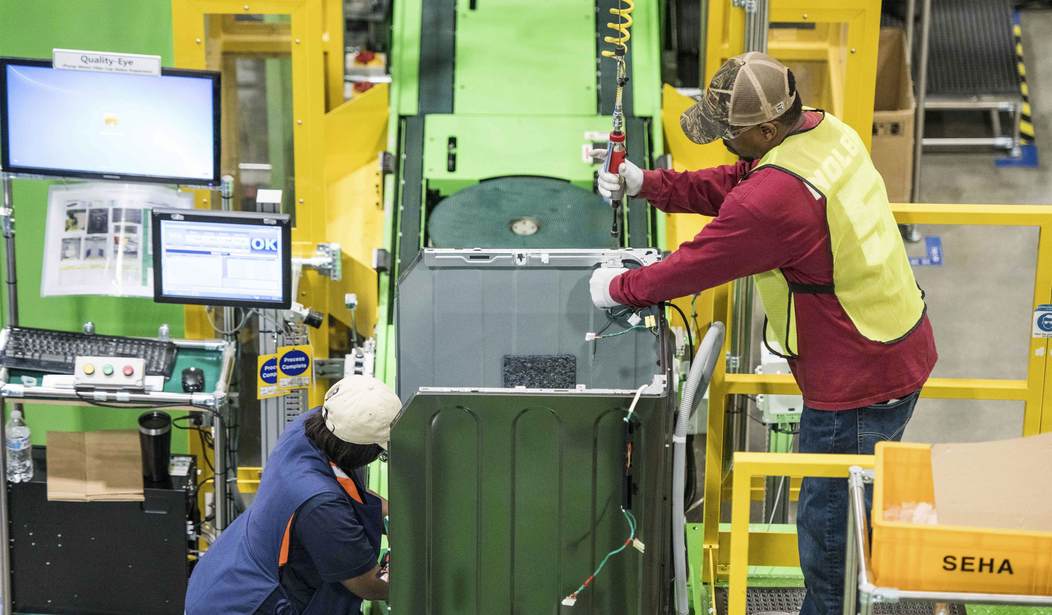Right-to-work (RTW) laws perennially have been tied to the whipping post erected by organized labor and flogged for everything from allegedly reducing workers’ voices to driving down wages and reducing the economic well-being of all workers, union and nonunion alike, according to one “progressive” group.
But a new study by a scholar at the Allegheny Institute for Public Policy says right-to-work states generally fared better in their jobs numbers during the coronavirus pandemic, at its start and as it wended into September.
“RTW has long been a good proxy for how state governments view free enterprise, free markets and the importance of limited interference in markets and society in general,” says Jake Haulk, president-emeritus of the Pittsburgh think-thank (in Policy Brief Vol. 20, No. 37).
As the National Conference of State Legislatures defines it, right-to-work laws give states the authority to determine whether workers can be required to join a labor union to obtain or retain a job.
“Twenty-seven states and Guam have given workers a choice when it comes to union membership,” the conference’s website notes. “Labor unions still operate in those states, but workers cannot be compelled to become members as a requirement of their job.”
The Allegheny Institute analysis looked at private-sector payroll jobs in each state as opposed to unemployment rates.
“That’s because unemployment rates can move contrary to what the underlying hiring suggests is occurring to the state of the economy because of swings in people leaving and entering or re-entering the work force,” reminds Haulk.
Private-sector jobs are the focus because in many states, government employment suffered very little and federal jobs increased, he added.
Recommended
For the U.S., private sector jobs fell 15.2 percent in April 2020 from the 12-month-earlier level. There were 29 states posting smaller than 15.2 percent declines in private sector employment.
“Interestingly, 21 of the 29 are right-to-work states,” the Ph.D. economist says. “With the exception of Maryland all the states with smaller than the national April-to-April job declines—including non-RTW states—are in the South, Midwest, Mountain West and Southwest with Oregon, at 14.4 percent, the only coastal state under a 15.2 decline.”
None of the North-Central, Mid-Atlantic or New England states had job losses less than the national decline.
Meanwhile, 21 states recorded losses greater than the national 15.2 percent decline from April-to-April.
These states ranged from 15.8 percent in California and Louisiana to highs of 26.1 percent in Michigan and 26 percent in Vermont. Pennsylvania’s job losses were 19.6 percent in the April-to-April comparison.
“Of the 21 states having greater than the national drop percentage from April-to-April, six were RTW states,” Haulk says. “And all of those had only recently adopted RTW.”
A better-than-national performance – a 6.8 percent job loss --was posted by 27 states in the September 2019-September 2020 comparison. Right-to-work states accounted for 22 of the 29 better-than-national-average performing states.
The four biggest September-to-September job losers include Hawaii (21.5 percent); Alaska (13.3); New York (12.4) and Vermont (11.2). The actual number of job losers in New York is enormous with over a million fewer jobs than a year before.
“The very best performers with losses at 4.5 percent or lower were all right-to-work states,” Haulk says. Only six of the poorest performers were RTW states while 15 were non-RTW.
Pennsylvania private jobs fared worse than nationally in the September-over-September comparison with 8.3 percent fewer jobs last month. (This notwithstanding a sizable drop in the unemployment rate from 10.4 in August to 8.1 percent in September.)
“This analysis has shown, conclusively, that right-to-work (RTW) states have fared much better on the whole under Covid than non-RTW states,” Haulk concludes.
Colin McNickle is communications and marketing director at the Allegheny Institute for Public Policy (cmcnickle@alleghenyinstitute.org).

























Join the conversation as a VIP Member